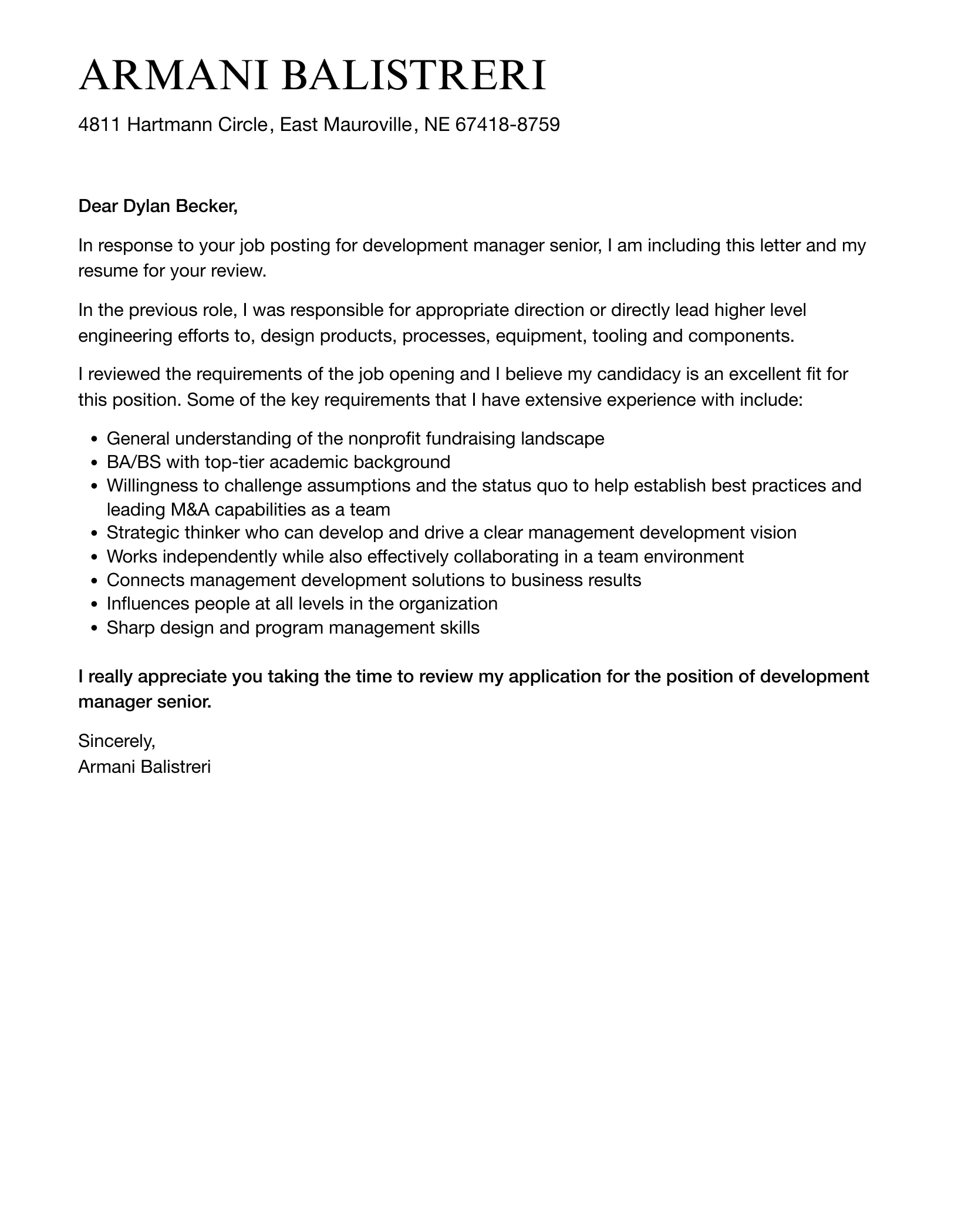Top 5 Tips for a Development Manager Cover Letter
A well-crafted cover letter is your first chance to impress a potential employer. For a Development Manager role, this is especially critical, as it showcases your leadership, technical abilities, and understanding of project execution. This article presents five essential tips to help you create a compelling cover letter that sets you apart from the competition and increases your chances of landing an interview. By focusing on these key areas, you can make a strong first impression and demonstrate why you are the ideal candidate for the position. Remember, your cover letter should not only summarize your resume but also tell a story about your career and aspirations, making it engaging and persuasive.
Highlight Your Skills and Experience
Your cover letter is the perfect place to showcase your most relevant skills and experience. Don’t simply list your past roles; instead, focus on how your skills align with the specific requirements of the Development Manager position. For example, if the job description emphasizes project management, highlight your experience in planning, executing, and delivering projects on time and within budget. If the role requires strong communication skills, provide examples of how you have successfully led teams, presented project updates to stakeholders, or mediated conflicts. Be sure to align your highlighted skills with the keywords found in the job description, making it easier for the hiring manager to recognize your qualifications.
Quantify Your Achievements
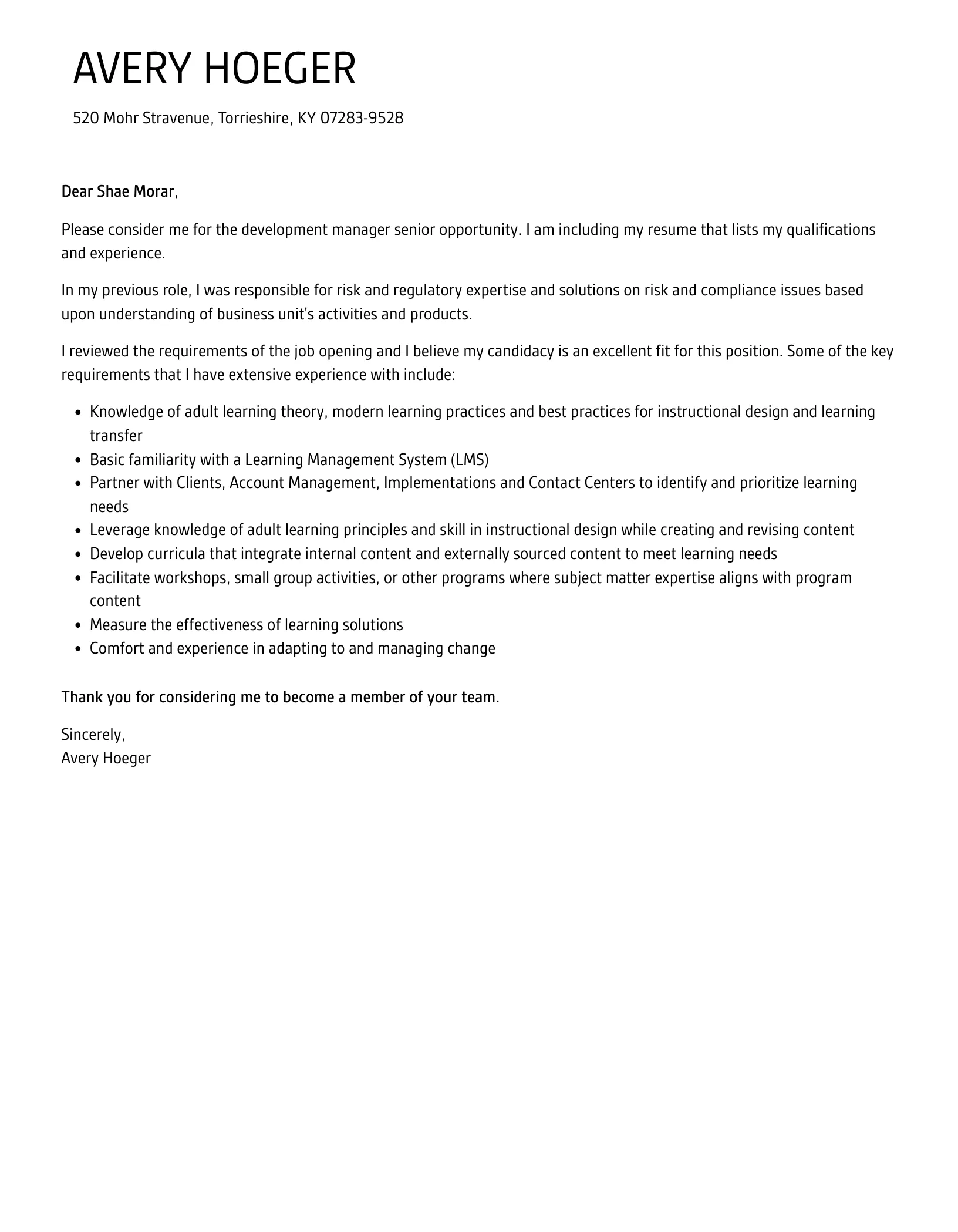
Instead of making generic claims about your abilities, quantify your achievements whenever possible. Use numbers and data to demonstrate the impact of your work. For instance, instead of saying “Improved project efficiency”, you could write “Improved project efficiency by 15% through the implementation of Agile methodologies, resulting in projects completed 2 weeks ahead of schedule”. Quantifying your achievements provides concrete evidence of your capabilities and makes your cover letter more compelling. Consider using metrics like budget savings, project completion rates, team performance improvements, or the number of successful product launches you’ve managed.
Tailor Your Letter to the Job Description
Avoid sending a generic cover letter. Take the time to tailor each letter to the specific job description. Analyze the job requirements and identify the key skills and experiences the employer is seeking. Then, use your cover letter to demonstrate how your qualifications align with those requirements. This might involve rephrasing your experience to match the language used in the job posting or highlighting specific projects that demonstrate your ability to perform the required duties. This shows that you’ve invested time and effort in understanding the role and the company, making you a more attractive candidate. Furthermore, by tailoring your cover letter, you’re more likely to pass through applicant tracking systems (ATS) that screen resumes based on keywords.
Showcase Your Understanding of the Company
Demonstrate that you’ve researched the company and understand their mission, values, and recent projects. This shows your genuine interest in the organization and your ability to align your skills with their goals. Mention specific projects or initiatives that the company is working on, and explain how your skills and experience can contribute to their success. You can find this information on the company’s website, in news articles, or on their social media profiles. Tailoring your cover letter with this information allows you to stand out, showing that you are not just looking for a job, but that you are genuinely excited about the possibility of working for that specific company.
Proofread and Edit Meticulously
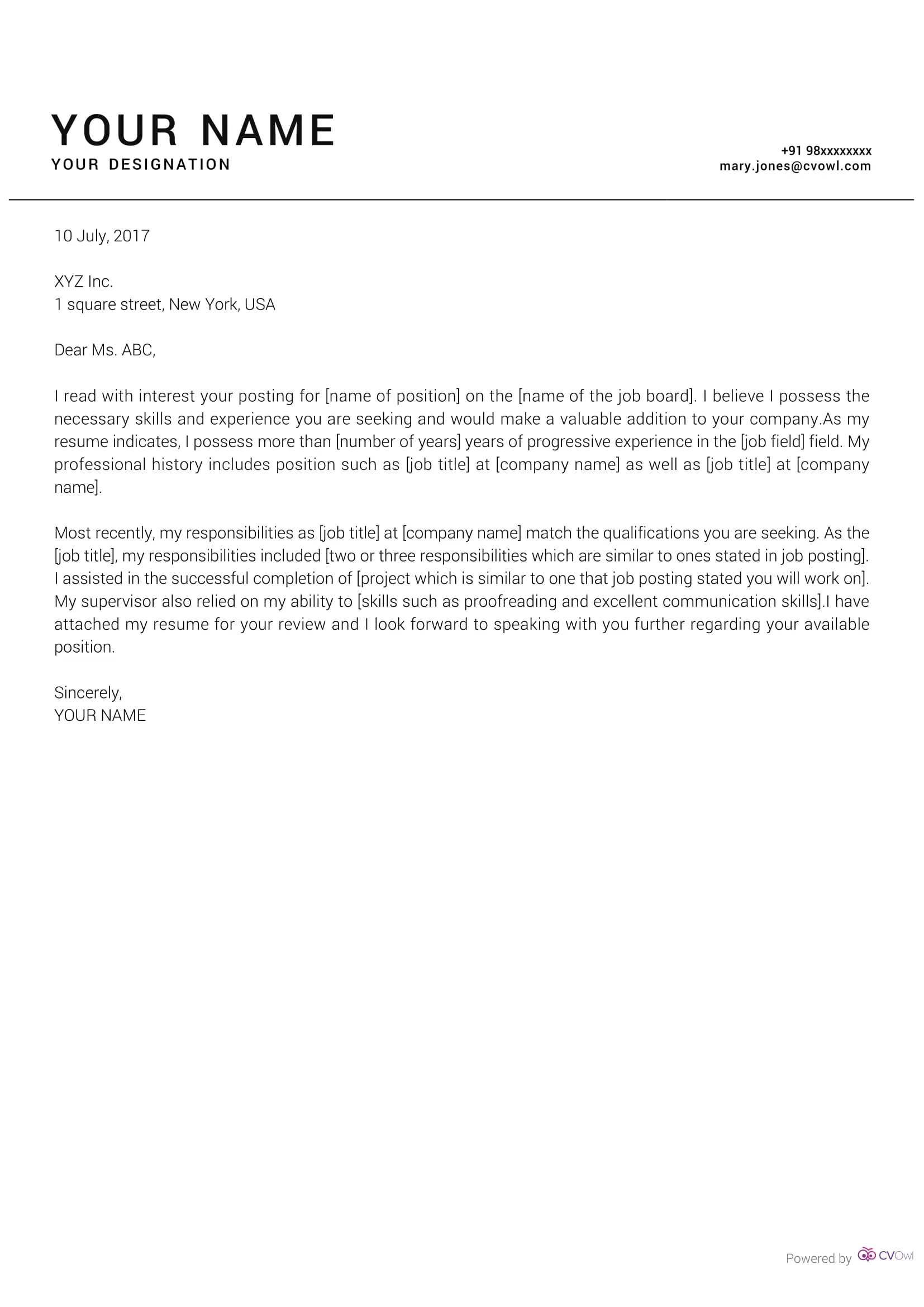
Typos, grammatical errors, and poor formatting can make a negative impression and undermine your credibility. Before submitting your cover letter, proofread it carefully for any mistakes. It’s also a good idea to have a friend or colleague review your letter. They may catch errors you’ve missed. Ensure your cover letter is well-structured, easy to read, and uses professional language. Check for consistency in formatting, font size, and style. A polished and error-free cover letter demonstrates your attention to detail and professionalism, both of which are essential qualities for a Development Manager.
Key Skills to Mention in Your Cover Letter
Project Management
Project management is a core skill for a Development Manager. Highlight your experience in planning, executing, and monitoring projects from start to finish. Mention your proficiency with project management methodologies, such as Agile, Scrum, or Waterfall. Include specific examples of projects you’ve managed, the challenges you faced, and how you overcame them. Describe your ability to manage project budgets, timelines, and resources effectively. Showcase your experience in risk management and stakeholder communication.
Team Leadership
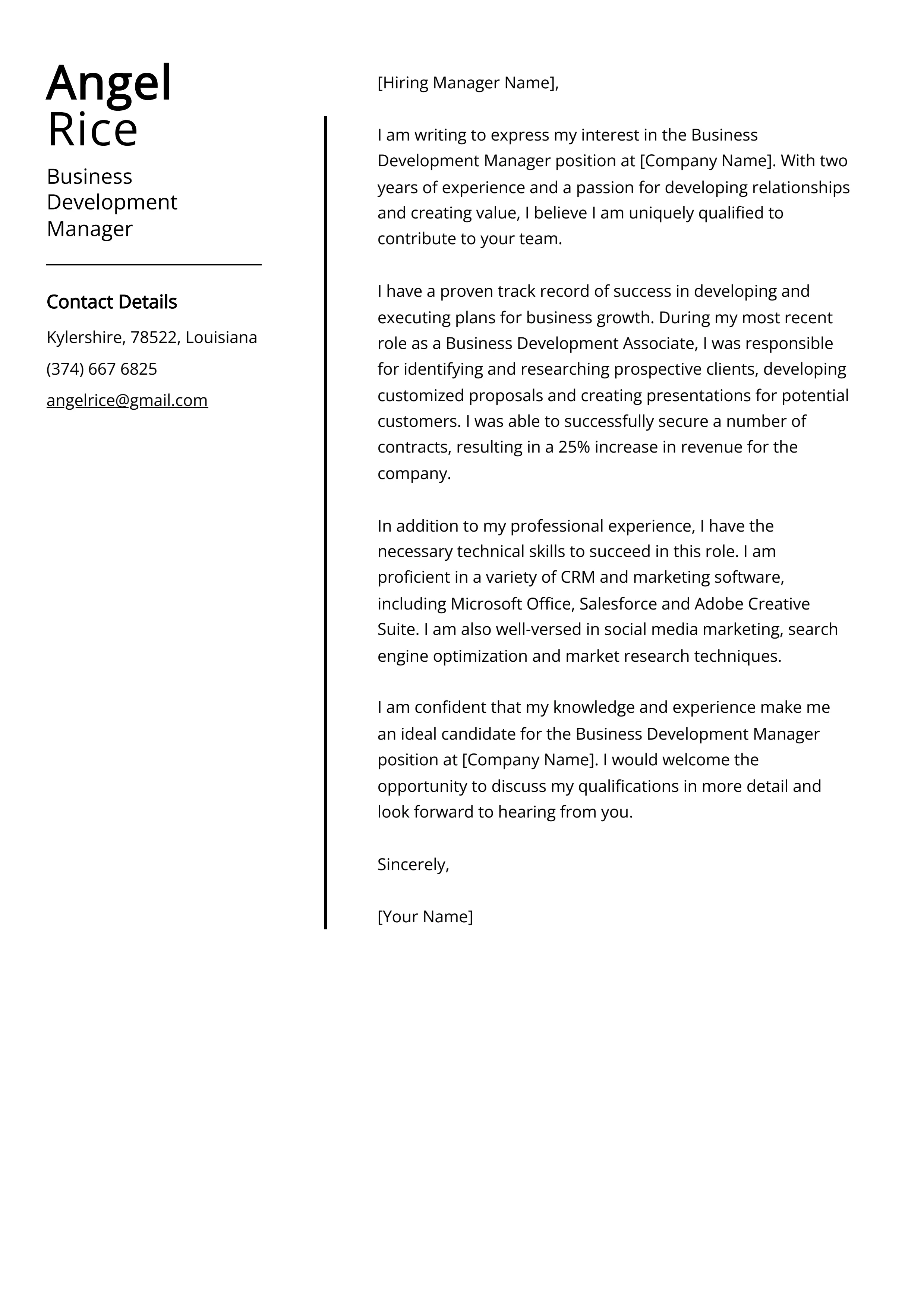
Leadership is another essential skill. Demonstrate your ability to lead and motivate teams to achieve project goals. Describe your leadership style, whether it’s collaborative, coaching, or results-oriented. Provide examples of how you’ve built and managed high-performing teams. Highlight your ability to delegate tasks, provide constructive feedback, and resolve conflicts. Mention any experience you have in mentoring or developing team members.
Technical Expertise
A Development Manager often needs a strong understanding of the technical aspects of the projects they oversee. Highlight your technical expertise, including your knowledge of relevant technologies, programming languages, and development tools. Specify your experience with different software development methodologies and platforms. Mention any certifications or training that demonstrate your technical proficiency. Show your understanding of the software development lifecycle (SDLC) and your ability to contribute to technical discussions and decision-making.
Communication and Interpersonal Skills
Effective communication and interpersonal skills are crucial for a Development Manager. Highlight your ability to communicate clearly and concisely, both verbally and in writing. Provide examples of your experience in presenting project updates to stakeholders, writing reports, and leading meetings. Demonstrate your ability to build rapport with team members, clients, and other stakeholders. Mention your experience in negotiating, influencing, and resolving conflicts. Emphasize your ability to work collaboratively and build consensus.
Formatting Your Development Manager Cover Letter
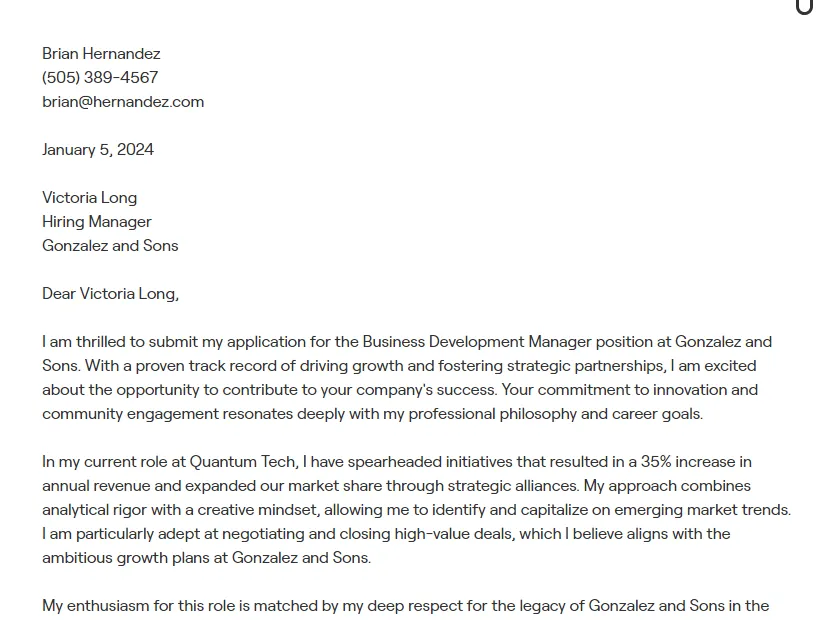
Header and Contact Information
Start your cover letter with a professional header that includes your full name, address, phone number, and email address. Make sure your contact information is accurate and up-to-date. You can also include a link to your LinkedIn profile or online portfolio. This information should be clearly visible at the top of the page, so the hiring manager can easily contact you. Use a professional font and simple formatting to create a clean and uncluttered header.
Professional Salutation
Address your cover letter to a specific person whenever possible. If you know the hiring manager’s name, use it in your salutation (e.g., “Dear Mr. Smith”). If you don’t know the hiring manager’s name, use a professional salutation such as “Dear Hiring Manager” or “Dear [Company Name] Team”. Avoid generic salutations such as “To Whom It May Concern”, which can make your letter seem impersonal.
Body Paragraphs and Content
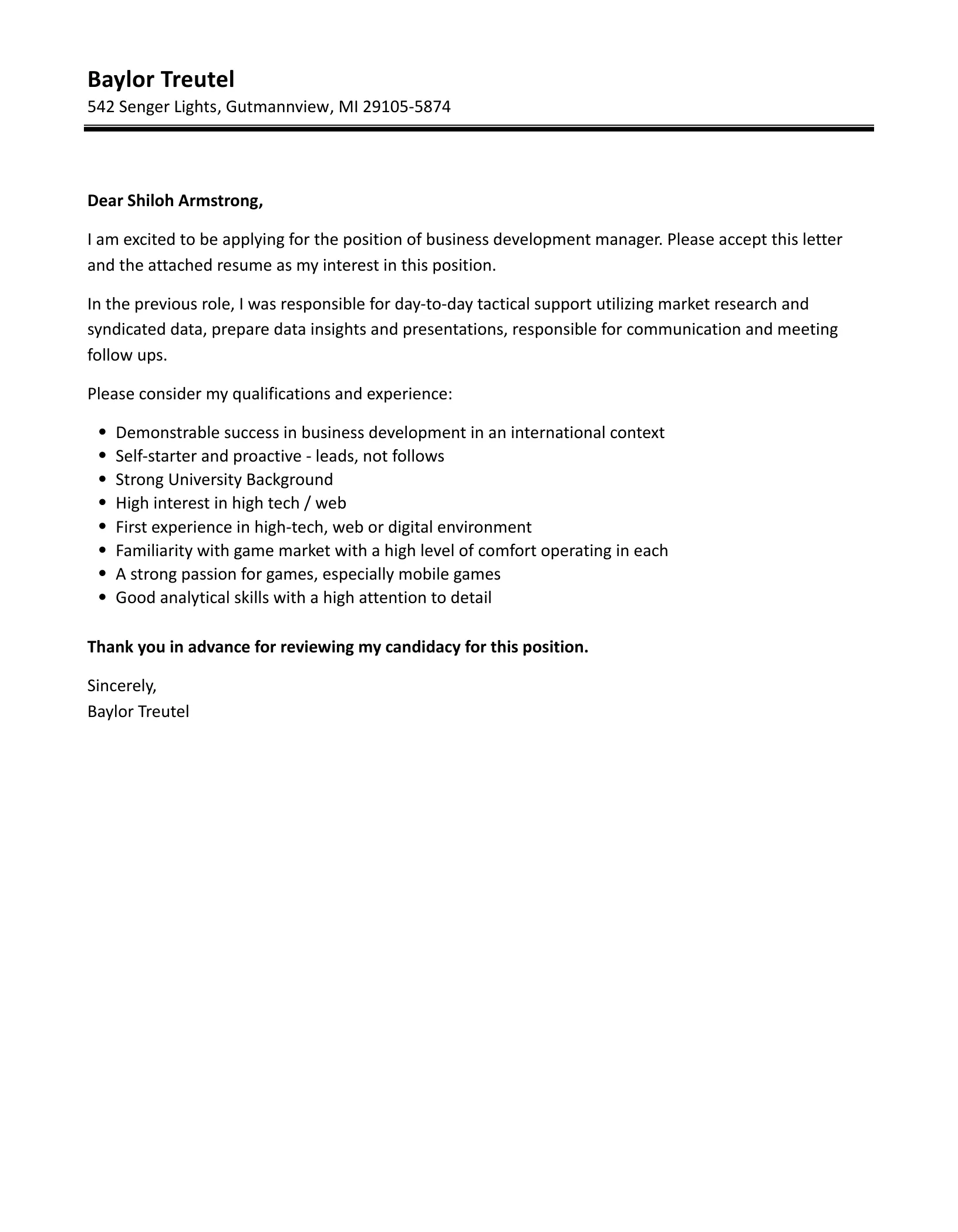
The body of your cover letter should be concise and well-organized. Start with a brief introduction that states your interest in the position and highlights your relevant skills and experience. In the following paragraphs, elaborate on your qualifications, using the tips mentioned earlier. Focus on your achievements, quantifying them whenever possible. Tailor your letter to the job description, highlighting how your skills align with the requirements. Keep your paragraphs focused and to the point, avoiding jargon and unnecessary details. Use strong action verbs to describe your accomplishments.
Closing and Call to Action
Conclude your cover letter with a strong closing paragraph that reiterates your interest in the position and thanks the hiring manager for their time and consideration. Include a clear call to action, such as stating your availability for an interview or expressing your eagerness to discuss your qualifications further. Reiterate your contact information at the end of the letter. Proofread your closing paragraph for any errors before submitting your cover letter.
